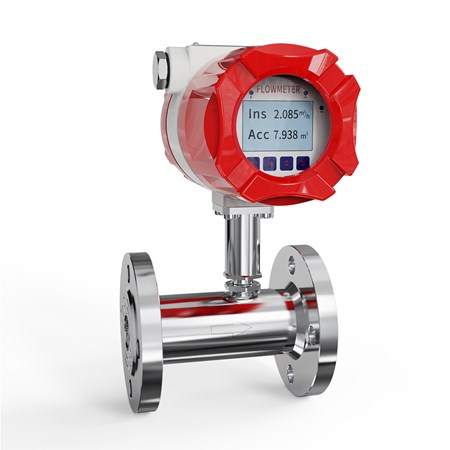When is it necessary to perform a Differential Pressure (DP) Measurement? In many contexts, it serves as the foundation for a wide range of other measurements, including flow, level, density, viscosity, and even temperature. This is because it is the most fundamental measurement.
One of the most common uses for differential pressure transmitters is flow rate measurement, which can be seen in Figure 5. This application is one of the examples given in the figure.
These devices include both the primary and secondary components that are required for differential pressure flow meters to operate as intended. This is because these devices contain both primary and secondary components. It is intended that this should be the case in a general sense. It was developed in order to obtain the most precise readings possible when measuring the pressure differential that was produced by the primary element. The goal of this development was to obtain the most accurate results possible. The development of this system had the objective of producing the most precise readings that could be achieved.

A good differential pressure transmitter will ensure that the differential pressure is measured accurately regardless of other changing parameters and will transmit a signal that reliably represents the differential pressure. This is because a good differential pressure transmitter will ensure that the signal it sends represents the differential pressure. This is due to the fact that a differential pressure transmitter of sufficient quality will make certain that the signal it sends accurately represents the pressure difference. A differential pressure transmitter that can be relied upon will also ensure that the signal faithfully reflects the differential pressure. Even though it is becoming increasingly common these days for this function to be performed by a flow computer or a Dcs system, we are going to continue to use the method that we have always used. However, it could also include digital communications such as HART, Profibusm Fieldbus, Modbus 485 RTU, or any one of a large number of other communication protocols as well. See Fig-5.
When someone talks about something being a Differential Pressure Transmitter, what exactly do they mean by that term?
The differential pressure transmitter is the pressure measuring instrument that is used in industry the most frequently and successfully. This is due to the instrument's ability to accurately measure small differences in pressure. This is a result of the instrument's capability of measuring pressure differences, however minute, with a high degree of accuracy. Both of these responsibilities are going to be carried out at the same time. It will come pre-assembled with two pressure ports, one of which will be labelled High and the other Low, and it will be ready to use upon arrival. It isn't necessary for the pressure at the low port to always be lower than the pressure at the high port, and it also isn't necessary for the pressure at the high port to always be higher than the pressure at the low port. Both of these scenarios are acceptable.
The following is an explanation of how a differential pressure transmitter works is put together:A differential pressure transmitter consists of three components, each of which performs a particular operation when assembled together.
The diaphragm is the component in question in the vast majority of the pressure sensing elements that are utilized in industrial DP Transmitters. One can consider the diaphragm in question to be a piece of mechanical apparatus. It is located precisely in the middle of the pressure inlet ports on both sides of the apparatus.
This topic is discussed in greater detail in Figure 7, which can be found below. The production of a signal that is indicative of electrical activity is brought about as a result of this deflection. The majority of the time, the responsibility for this task rests on the shoulders of the sensors. The amount of pressure that is applied to the sensor has an effect on the output in a way that is related to how the output is affected.
2) Electronic UnitAt the lower chamber, the output of the sensor, which is an electrical signal, can only be measured in the millivolt range. This is because millivolts are the smallest range that can be measured.

This signal will either be amplified to a range of 0-5V or 0-10V, or it will be converted to a current of 4-20mA, and then it will be transmitted to a remote instrument. Amplifying the signal to a range of 0-5V or 0-10V will allow the signal to be transmitted further. There will be a completion of one of these processes.
A direct current output is produced by this type of transmitter. The magnitude of this output is directly proportional to the pressure range that the differential pressure transmitter measures.
The current is 4 milliamperes in the lower range, and it is 20 milliamperes in the higher range. The difference between the two ranges is significant. This controlled current output is unaffected by variations in load impedance as well as variations in supply voltage. Neither of these factors has any effect on the controlled current output. The output of the controlled current is unaffected by either of these two factors in any way. The BRAIN or HART FSK protocol is being utilized for these digital communications.
There is no limit to the number of uses that differential pressure transmitters can have, and as a result, there is no limit to the number of applications that differential pressure transmitters can have in the industrial sector.
Monitoring sprinkler systems all over the country is the primary responsibility of this organization.







Comments (0)